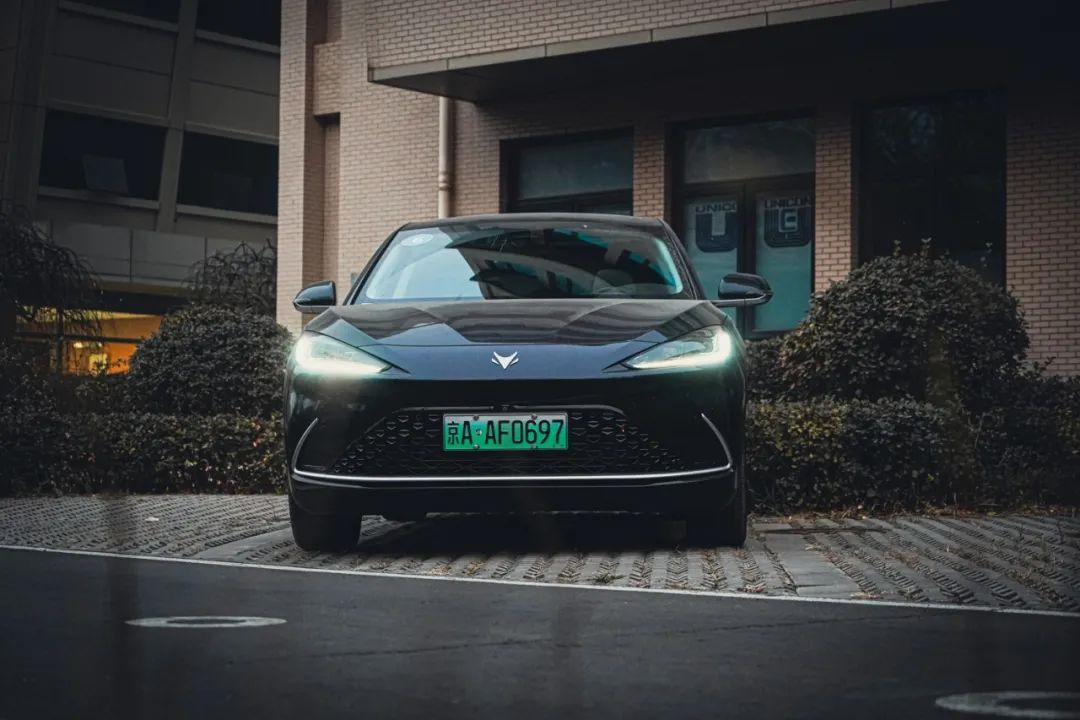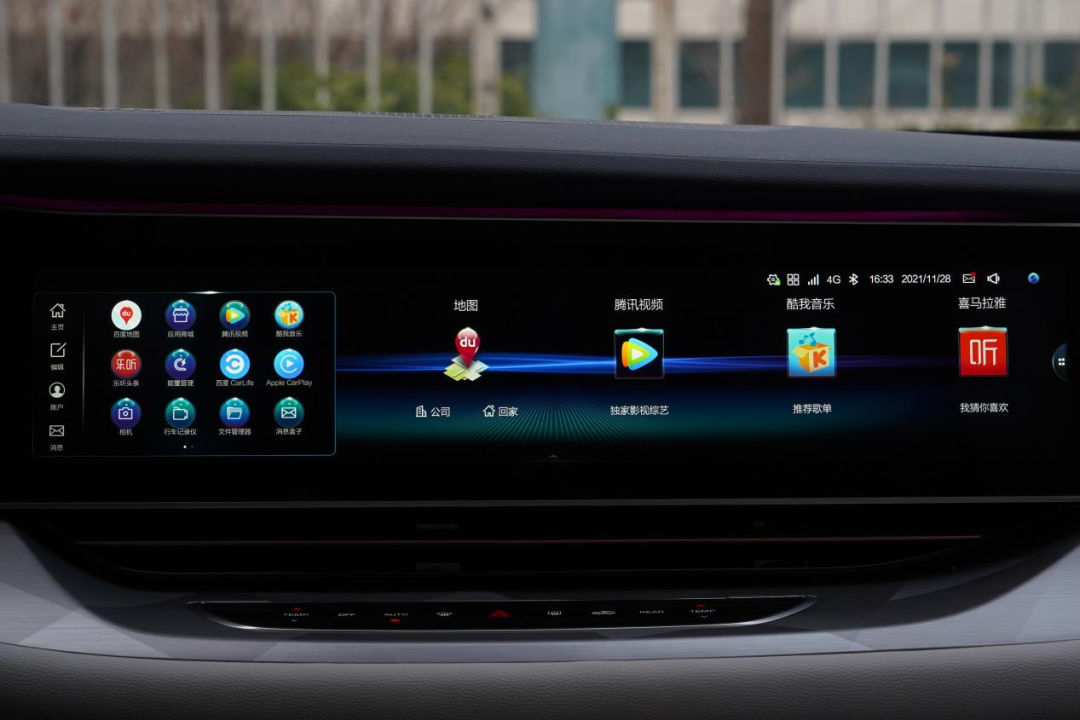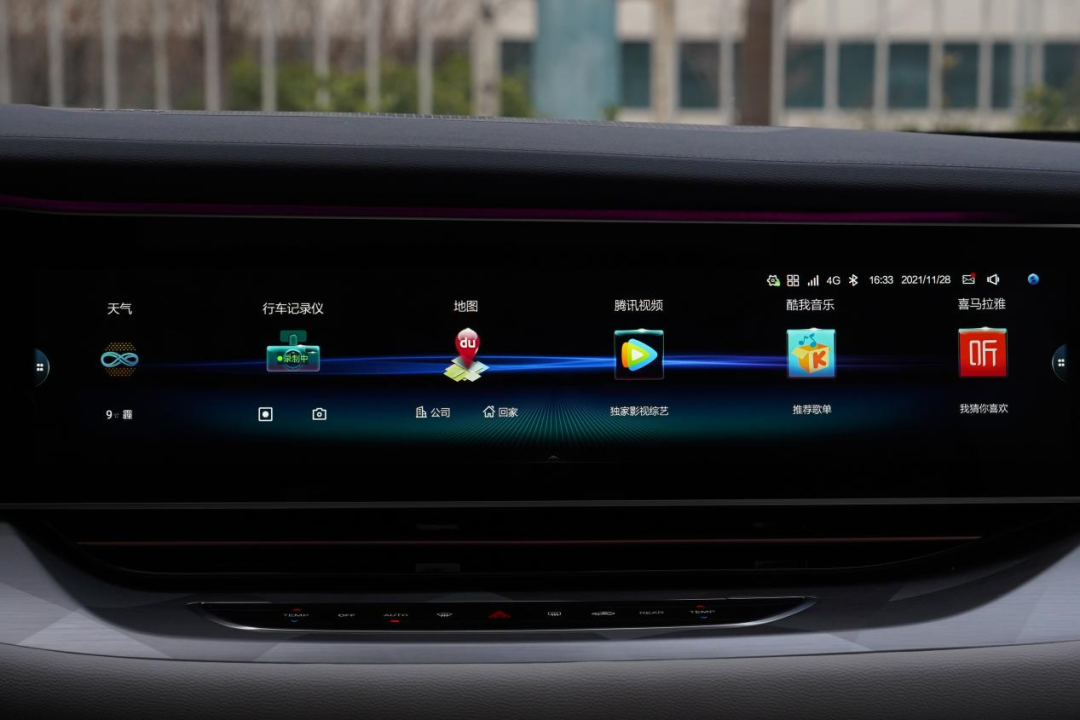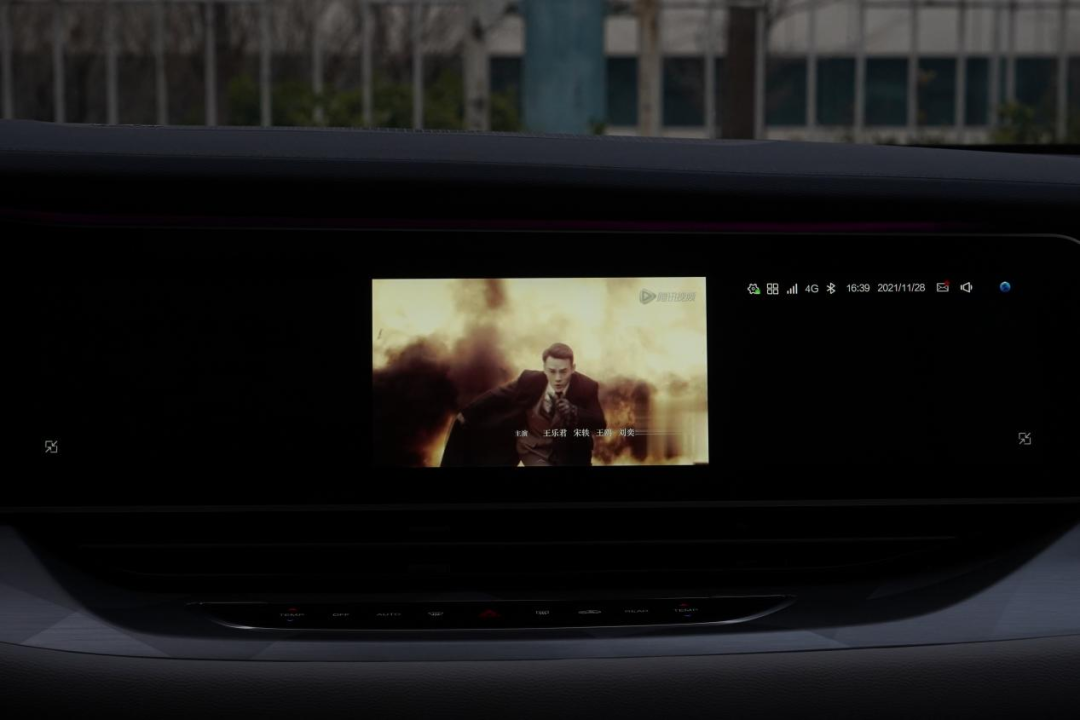Hello everyone, this is the 7th episode of the third season of GeekCar Intelligent Cockpit Intelligence Bureau, and I’m Mr. Yu.
In the previous episode, we conducted a review of the intelligent cockpit of SAIC-GM Buick Enclave Plus. Its stable intelligent voice performance, a series of empowering features from Baidu Apollo, and the alternative design of relying on physical control buttons to activate voice assistants have left a deep impression on us.
Now, let’s get back to the topic. In this episode of the Intelligent Cockpit Intelligence Bureau column, we will continue to present a concentrated overview of various experiences, details, and analyses inside the intelligent cockpit. At the end of the review, we will also chat with you about the insights and inspirations that the cockpit brings us.
Mr. Yu has always believed that chatting with others is better than reading millions of books. So, we welcome you to come and chat with us.

The protagonist of the 7th episode of the Intelligent Cockpit Intelligence Bureau is ARCFOX Alpha S, a luxury pure electric sedan from Beijing Automotive Group’s new energy high-end brand, which focuses on intelligence.

As one of the hottest topics in the industry in 2021, most of the attention is usually focused on Huawei’s L4 level autonomous driving solution and HarmonyOS cockpit system. It is obvious that Huawei has become the key to attracting attention in the automotive industry. Because of this, we have decided to set a precedent: Firstly, we will conduct a review of the native intelligent cockpit of the ARCFOX Alpha S, and present it in a way that is familiar to everyone in this episode. Then, at some point in the future, we will use the same review system to conduct a comparative review of the ARCFOX Alpha S Huawei HI version’s HarmonyOS cockpit.
If everything goes as planned, this will be another program innovation after the NIO EC6 cross-OTA version review. Let’s analyze with you what’s behind this craze, and what Huawei can bring to ARCFOX and the automotive industry.

- This review is based on version ARCFOX-V1.2.0 of the ARCFOX Alpha S.
Interaction Hardware
The cockpit of the ARCFOX Alpha S is equipped with two screens, a 12.3-inch full LCD instrument panel and a 20.3-inch long and narrow central control touch screen. Both screens are located within the same screen frame.
The independent car control screen once appeared on the Arctic Fox Alpha T has been canceled, and its functions have been integrated into the very eye-catching 4K central control screen.

As a major interactive feature of this ultra-high-definition central control screen, it supports a split-screen display mode. Not only can different applications or settings be opened separately, but the display content on the left and right sides can also be interchanged by two-finger dragging. When there is more than one passenger in the front row of the car, some interesting operations can be performed, which we will discuss later.

The center console integrates a multifunctional control panel, including a large CD-shaped multifunctional knob, several physical buttons for quickly switching driving modes, and quick buttons for vehicle operation. With a little familiarity, front-row passengers can conveniently perform corresponding operations, providing an alternative for situations where they are too lazy to touch the screen.

Above the button area is a groove specifically designed to hold the electronic key. The groove design is not very deep, making us worry that the key might fly out during a sudden brake.
On the right side of the physical button area is a silicone wireless charging panel, which has generally average charging speed and is not very friendly to phone cases.

The driver’s seat is equipped with a HUD, which provides simple speed and navigation-related information assistance for driving. Considering that it should not interfere with driving too much, the display information is relatively simple, and the imaging effect is relatively clear.

Under the slender central control screen is an intentionally designed air outlet with a weak presence, accompanied by a row of touch-type air conditioning buttons.
 The drop-down menu at the top of the main interface will bring up a quick menu interface that contains a series of functions related to body, system, volume, brightness, and connectivity:
The drop-down menu at the top of the main interface will bring up a quick menu interface that contains a series of functions related to body, system, volume, brightness, and connectivity:

The pull-up operation from the bottom of the main interface corresponds to a series of functions related to air conditioning and seats, similar to NIO OS 3.0’s “comfort” interface:

There is a clever design here. Users can drag the “aiming” cursor in the interface to precisely control the direction of the hidden air outlet below the central control screen and adjust the most comfortable blowing effect according to their own feelings:

There are quick application menu entrances on the left and right sides of the central control screen, and users can call up the application menu by clicking:



Visual Elements
The system interface of the Polar Fox Alpha S is mainly in deep blue and white, supplemented by several cold colors.
In the menu for vehicle settings, black is used to indicate buttons and light blue and white to indicate status.
The designer also added a reflection effect to the black virtual buttons to emphasize the texture.
After seeing too many black and white visual systems, this design brings some freshness, and it also fits the technology-oriented positioning of the vehicle. Perhaps to improve interaction efficiency, a few application icons adopt a design style that is closer to the original factory, which can withstand careful scrutiny and takes advantage of the high resolution of the 4K screen.

The dashboard also follows the same visual design style and it shows that the designer is emphasizing the implementation of three-dimensional effects in the flat design.
 ### Smoothness
### Smoothness
Due to the large size of the center screen of the Hycan Alpha S, the huge icons are presented in a scroll wheel-like manner. This operation method puts forward requirements for the smoothness of the system.
Usually, no matter whether the application on the narrow center screen is single or double, there will be a relatively good operational smoothness, and there is no overly obvious operation lag.
However, during the cabin review work lasting for several days, an unexpected application crash occurred. The specific symptom was that the screen could not respond to touch operations, and it returned to the desktop after a few seconds. Triggering mechanism unknown.

Map Function
The main map resource of the Hycan Alpha S is Baidu Maps, and the overall interface and functions are also very “Baidu Maps”.
Baidu Maps supports full-screen display on the center screen —— We can see that under this mode, the effective use area of the center screen is wasted, and the driver’s line of sight is not convenient to touch the content on the right boundary. Therefore, it is not recommended.


At this time, the first typical scenario of the center screen split-screen drag-and-drop interaction is reflected. The co-pilot can open Baidu Maps on his side, select the location and route, and then use two fingers to drag the navigation interface to the side near the driver’s seat for easy viewing.

Hycan Alpha S’s Baidu Map also supports LBS (Location Based Services), which can recommend scenarios such as parking, charging, consumption, and travel based on the current location.
However, in our subsequent road tests, some problems also occurred.
In our intelligent cabin review system, the design considers the ability of vehicles to perform inertial navigation in weak GPS signal conditions. After testing in scenes such as underground tunnels, the combination of Hycan Alpha S and Baidu Maps did not perform well in inertial navigation.When driving the Hozon Auto Alpha S into a tunnel, the vehicle’s position immediately stopped refreshing. Despite going through multiple turns, intersections, and tunnels, the position did not respond. Throughout the entire process, the vehicle’s position appeared to teleport several times on the map before remaining stuck until we completely left the tunnel and were free of any artificial obstructions above us, at which point the position returned to normal with a significant “teleport” on the map.

Application Ecology
From an application perspective, the performance of the Hozon Auto Alpha S is average.

In terms of video applications, Tencent Video is the market leader in copyright and supports VIP account login, allowing synchronization of viewing records and playback progress on other clients.

The unique shape of the central control screen makes the video application somewhat awkward. When it is not on the left or right, it looks awkward in full-screen mode.

In terms of music applications, Hozon Auto Alpha S chose Tencent’s Kuwo Music.

Regarding audio content, Himalaya is another old friend. If we speak of the car-mounted application with the highest appearance rate in the current season of the Intelligent Cockpit Intelligence Bureau, it is undoubtedly Himalaya.

Regarding news applications, Hozon Auto Alpha S is equipped with the audible news application Leping Toutiao.
Hozon Auto Alpha S’s application ecology almost exclusively chooses platforms in each category’s top tier. It is not difficult to see that they are mostly focused on entertainment applications. Based on performance, these applications satisfy basic needs in terms of practicality and usability while driving, but it is challenging to connect the cockpit of Hozon Auto Alpha S with more scene space.
Multi-Scene Voice Interaction PerformanceBased on the new evaluation system, we tested the wake-up rate and recognition accuracy of the cabin intelligent voice assistant, “Little Fox,” in static and dynamic environments through three main listening environments: completely closed windows, high wind noise, and maximum air conditioning wind speed. The results show that regardless of the stationary or driving status, and regardless of closed or open windows, road noise, wind noise, or air conditioning noise, the wake-up success rate of the “Little Fox” reached 100%, making it the most outstanding intelligent cabin with the best voice wake-up performance in the current season of the Intelligent Cabin Bureau column.
On the other hand, even when the cabin is playing music and voice content at a high volume, the success rate of “Little Fox” accurately executing voice interaction commands can still reach 100%; when there is loud talking and noise between passengers in the car, the accuracy of “Little Fox”‘s response to voice interaction commands will drop to 50%.
In terms of application ecology, the polar fox alpha S has access to mainstream entertainment applications and has achieved the integration of VIP accounts, with a high degree of interaction logic and system compatibility. At the same time, the intelligent voice assistant “Little Fox” supports multiple sets of wake-up-free, OneShot and other voice interaction capabilities, which to some extent improves the usability.
Overall, we believe that the intelligent cabin of the Polar Fox Alpha S performs relatively well in terms of application availability and voice-related experience. Through evaluation, we can also see that the HMI design team has made a lot of effort to improve usability through quick entry configurations in order to avoid the size of the central control screen becoming a burden on interaction efficiency.
If the team can consider introducing more types of applications into the cabin in the future and focus on developing more application scenarios that combine cabin hardware, we believe that it will receive higher praise in the future.
Here, we will discuss some of the debatable points encountered in each evaluation.
The intention of setting this section is not to dictate or criticize the product or the team’s work in a bossy way. We hope that these words can inspire independent thinking.
Interaction Aspect
Inhumane text input method## Problems with the ARCFOXx Alpha S
There are some unpleasant issues with the ARCFOXx Alpha S car, which are difficult to ignore.
For example, there is no support for fuzzy input method searching and word association when searching for locations using the keyboard. When typing text into the search box of the car navigation, we must enter each letter’s initials and full vowel sound without triggering any input method’s fuzzy searching and text association effects. For example, if Mr. Yu often goes to Beixinqiao, he must input the complete “beixinqiao” for the system to recognize it accurately. In the era of smartphones, this input method experience seems antiquated.
Admittedly, the “Little Fox” voice recognition capability is relatively good, and voice searching is not too difficult. However, this does not mean that voice interaction can completely replace text input, especially when facing different dialects and accents. Whether “Little Fox” can perform as stably when facing Beijing accents + Mandarin when compared to its current performance is still to be seen.
Hardware
Inadequate Wireless Charger
For example, the wireless charging panel in the Nakashima area. From a hardware perspective, there are no problems with the ARCFOXx Alpha S’s silicone wireless charging panel; its anti-skid design is also commendable. However, in actual usage, the charging efficiency is a bit troublesome. To quantify, in Mr. Yu’s case, with his Qualcomm Snapdragon 870 smartphone using a 5G network, the wireless charging speed is only slightly faster than just maintaining battery life.
Moreover, this is the most unfriendly wireless charging panel for phone cases Mr. Yu has ever seen. The phone must be placed stably in the center of the lower border to activate wireless charging.
One more point: the ARCFOXx Alpha S’s intelligent cockpit supports device forgetting reminders. If a mobile phone is forgotten on the wireless charging panel, the vehicle will use a prompt tone to remind the user. However, in practical testing, perhaps because the ARCFOXx Alpha S has very good cockpit sound insulation or because the reminder tone’s volume and frequency response are too small, forgetting alerts could be missed if not listened attentively.

Lost DMS Functionality
Due to the in-car camera function, the ARCFOXx Alpha S supports not only in-car photography but also a series of DMS reminders. However, its effectiveness is not satisfactory.
First, we could not find the switches for the Fatigue Monitoring Reminder and Distracted Driving Monitoring Reminder, which contained only one surface connection. We searched through the vehicle’s settings and apps, and finally found that the two switch and account login interfaces were put together. Such design in the system’s logical layer is puzzling.
But that’s just the beginning.We will try to trigger the vehicle’s DMS monitoring reminder function by simulating natural human reactions during driving when feeling drowsy and distracted, including yawning, staring, being sluggish, and deliberately avoiding looking at the road ahead, for at least five seconds. Unfortunately, no matter how we pretend to yawn, stare or look around, the system never reminds us. So we have to wonder if it’s because we’re not good enough or if we haven’t reached the threshold for triggering the reminder mechanism. This raises a serious question for us: if this function is equipped, what does it take to make it work?



To be frank, the strengths and weaknesses of the Alpha S intelligent cockpit of FOXCONN are obvious. The emphasis on a tech-savvy visual design, the Infinity sound system matrix from Harman Kardon for a stunning audio experience, the relatively spacious front space, the unique “one for two” central control screen, the combination of 4K resolution + Corning Gorilla Glass cover that delivers great visual effects and operating touch, the stable intelligent voice interaction experience, the convenience of Baidu CarLife + Apple CarPlay mobile phone mirroring, etc.

On the other hand, the application ecology in the FOXCONN Alpha S system is almost entirely focused on audio and video entertainment, and only a few major platforms have been selected. The limited application ecosystem has also reduced the possibilities of the cockpit to just the “driving cabin” scenario. For example, the lack of hard capabilities like inertial navigation means that the navigation in the FOXCONN Alpha S cannot effectively assist or guide drivers in such situations as tunnels and under overpasses. The intelligent voice assistant “Little FOX” performs steadily when dealing with command-type interaction, but once beyond its range, it can become somewhat weak. The DMS function that exists but cannot be triggered gives people a feeling of lack of effort, like “When you listen to the ruler’s words, it’s like listening to your own.”
From both a hardware and software perspective, we can see that the FOXCONN team is doing everything they can to create a product that fits its positioning.
But at the same time, we can clearly sense that the product here refers not to the “intelligent cockpit” but to the “car.”
All the product designs and capabilities in the Alpha S cockpit of JAC are intended for driving and riding, and all imaginativeness is about the car, not the smart cockpit. As long as there is a little bit of deviation, the desired effect will often not be achieved.
After all, the smart cockpit is still one of the components of the “car”, and we cannot conceptually separate it.
For JAC, a traditional car company with a long history, the existence of the Alpha S undoubtedly represents its most pioneering design language and the most advanced intelligent level.
Going back to the original intention of this issue, before completing the evaluation and comparison of the smart cockpit of the “Huawei Inside” version of the Alpha S, Mr. Yu still believes that “HUAWEI Inside” will not be the only soul of the Alpha S.
This article is a translation by ChatGPT of a Chinese report from 42HOW. If you have any questions about it, please email bd@42how.com.
